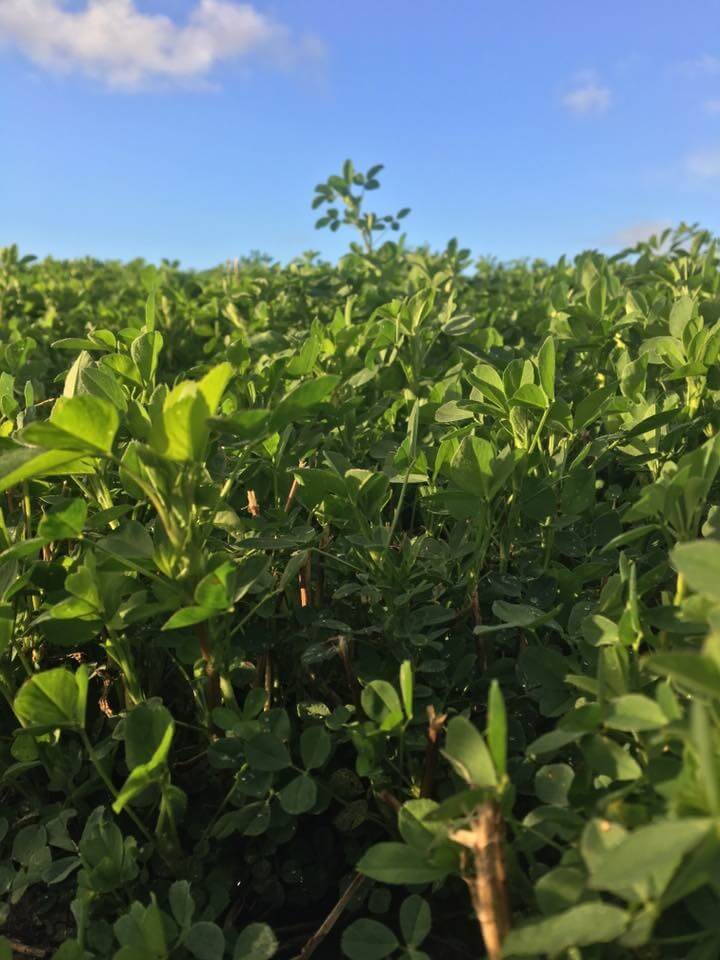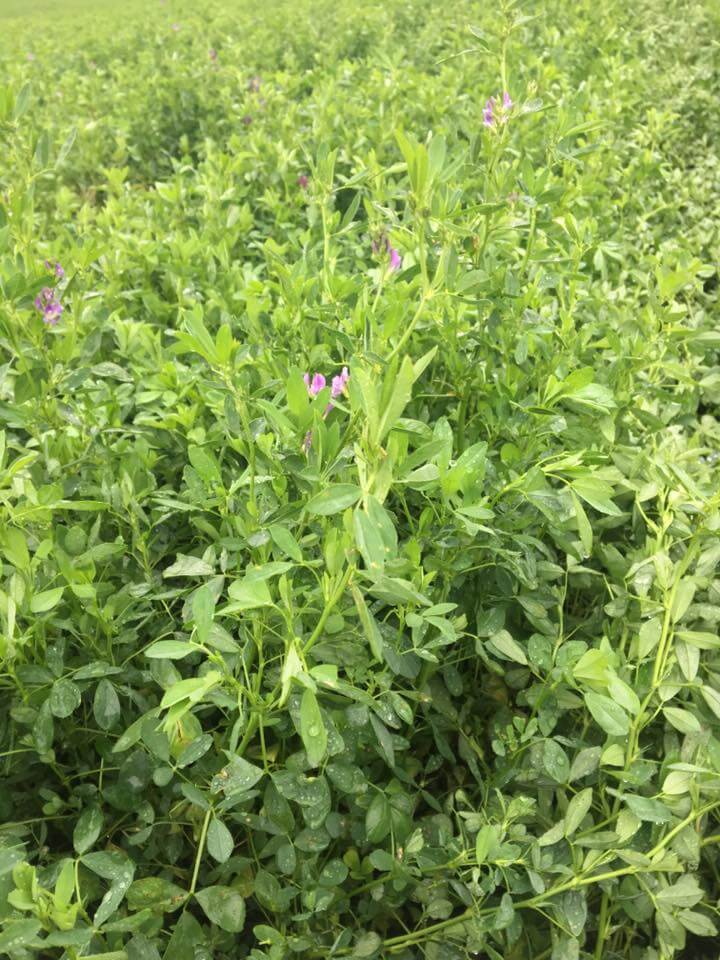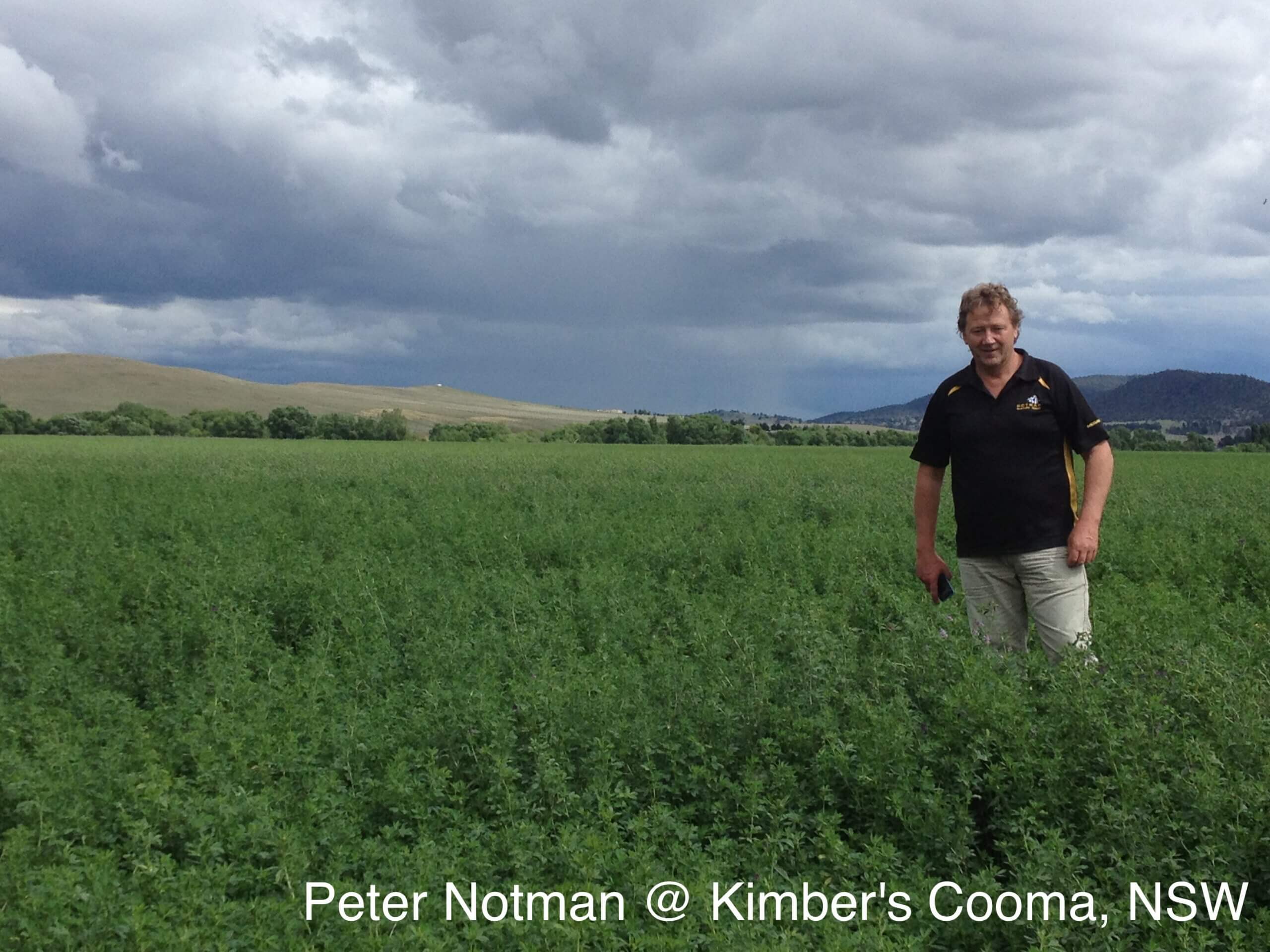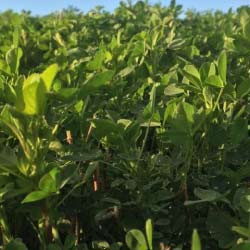In our experience in grazing Lucerne is generally grown on sites that will not support good stands of permanent pasture year round due to lack of summer moisture and or poor soil moisture holding profile.
High yielding lucerne provides 3 to 4 and sometimes even 5 cuts per year and it will persist for at least 4 years and in some cases has been known to continue good high quality production for up-to 5 or 6 years. It is extremely robust with exceptional drought resistance due to its deep roots which often reach deep throughout the soil profile, which is ideal for farms that dry out significantly over summer.
Why is drought tolerant? Lucerne relies on stored energy (carbohydrates) in its root system to produce new foliage following grazing!
The Stamina lucernes have low broad crowns and naturally have high forage quality with fine stems and high leaf/stem ratio. Stamina lucernes are able to maintain this quality by remaining a dense, leafy stand rather than opening up and becoming stalky and weedy.
Lucerne will grow on a variety of soils, but does best on deep, well-drained soils of medium to light texture. It can be used as a special purpose pasture to finish prime lambs and beef cattle in late spring and summer when other pasture species are low in protein and may have dried off, or harvested as a crop that can be repaid many times over.
When looking for a long term highly persistent stand of lucerne the newer generation lucerne Stamina GT varieties offer true grazing tolerance and premium quality hay characteristics.
If you’re new to growing lucerne in southern Victoria here are our top tips for early establishment:
- Spring is an ideal time to plant lucerne, as there is increasing soil temperatures
- It seems to perform best on deep sandy loams, alluvial soils, red basaltic soil, red volcanic soil and alluvial flats.
- Understanding the limitations of lucerne: factors such as low pH, Aluminium and heavy soils prone to waterlogging or poor drainage are areas to be avoided.
- Soil test 0-10cm and 10-60cm for pH, Electrical Conductivity (EC), Aluminium (Al), Phosphorus (P), Potassium (K) and Sulphur (S) levels and correct as necessary (talk to your local agronomist). Apply lime if pH is low. Don’t forget Molybdenum.
- If you have never grown lucerne before, plant a pure stand of lucerne and learn how to manage it.
- Seedbed preparation is important – prepare well in advance, creating a fine, firm seedbed, clean of any weeds.
- For long term productivity and persistence of lucerne stands, best practice management is to rotational graze with a minimum period of at least 35 days recovery.
The Stamina range of TRUE grazing tolerant lucerne provides:
- Strong recovery from drought
- Higher quality hay and strong return on investment
- The ability to tolerate pests and diseases such as aphids, Sitona Weevil, fungi and viruses
- High yields and strong stand density
- Improved traffic tolerance
- Lower crown height causing less stress on crowns
- Long term, reliable feed (several years of grazing)
- Reduced risk of weed invasion by maintaining stand density for longer (potentially lower chemical costs)
- Higher dry matter production over multiple years more meat/hay produced per hectare
For more information on establishing a grazing lucerne crop get in touch with Notman Pasture Seeds on (03) 5659 2314.










